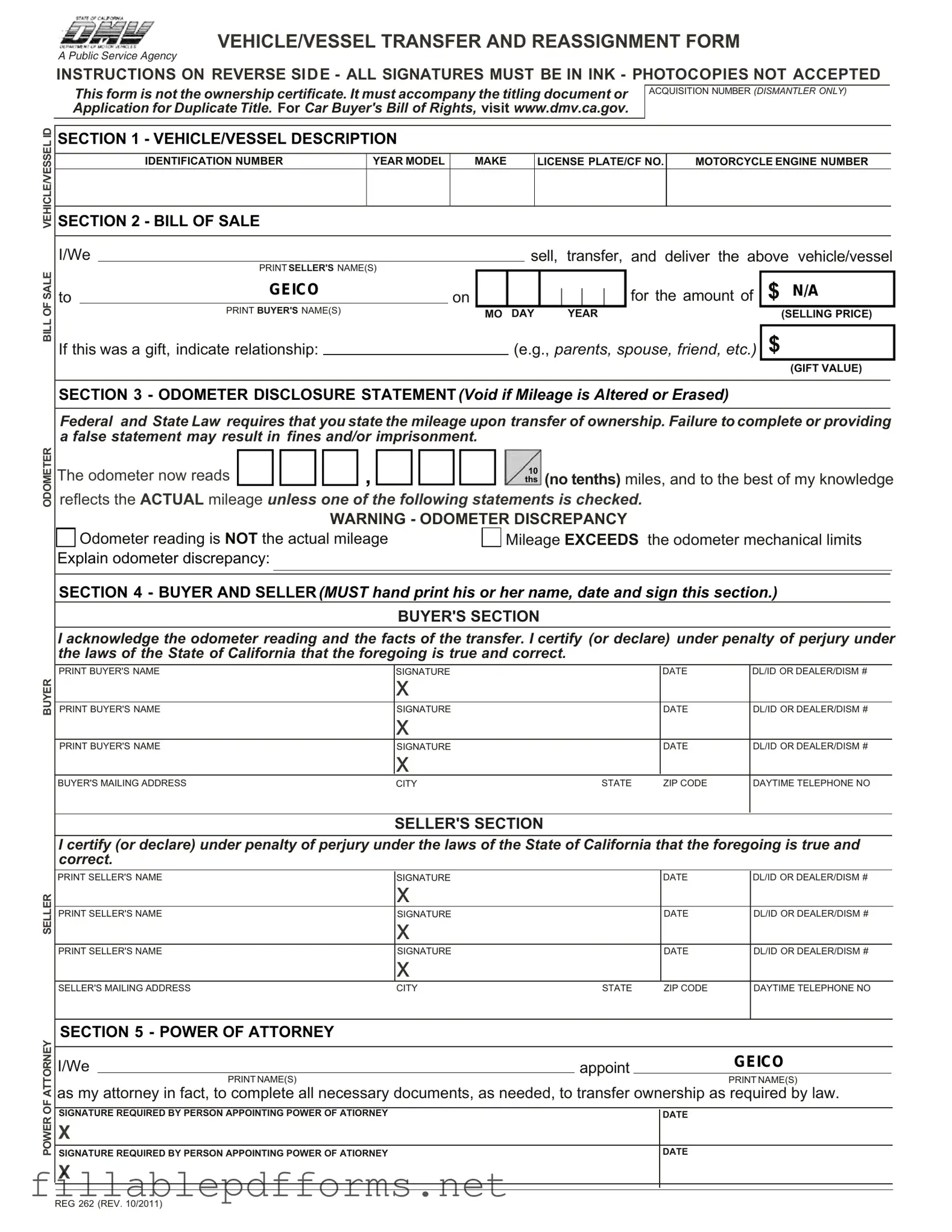The California Form REG 262, known as the Vehicle/Vessel Transfer and Reassignment Form, plays a crucial role in the process of transferring ownership of vehicles and vessels in the state. This form is not a title certificate but must accompany the title or an application for a duplicate title. It is essential for both buyers and sellers to understand the various sections of the form to ensure a smooth transaction. The first section requires detailed identification of the vehicle or vessel, including its make, model, and identification number. Following this, the bill of sale section captures the essential details of the sale, such as the seller's and buyer's names, the selling price, and any relationships if the transfer is a gift. The odometer disclosure statement is a critical part of the form, requiring accurate reporting of the vehicle's mileage at the time of transfer. Any discrepancies or alterations in this section can void the disclosure, leading to potential legal issues. The form also includes sections for buyer and seller information, where both parties must acknowledge the transaction and certify its accuracy under penalty of perjury. Lastly, if someone is acting on behalf of another party, a power of attorney section allows for the appointment of an agent to handle necessary paperwork. Understanding these components is vital for anyone involved in a vehicle or vessel transaction in California.
